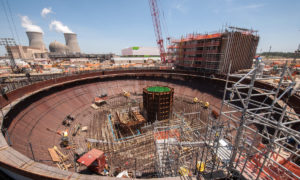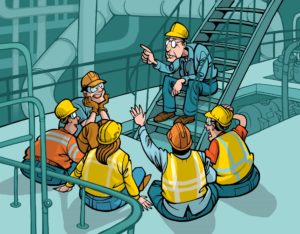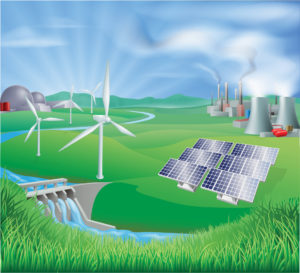Facts, Figures, and Findings from EPRI Research, Reports, and Other Sources

Study Aims to Address Knowledge Gap on Bird Vision
An EPRI study recommends ways to use colored markers to prevent bird collisions with power lines, while emphasizing that more research is needed to understand how birds perceive the markers. Many birds are killed each year as a result of collisions with power lines, and utilities deploy markers on lines to improve visibility. Some markers spin or rock in the wind, and some include lights, luminescent bases, and coatings to enhance visibility. Studies indicate that their effectiveness varies widely, and no research has confirmed or quantified how birds perceive them. Through ...
Read More
An EPRI study recommends ways to use colored markers to prevent bird collisions with power lines, while emphasizing that more research is needed to understand how birds perceive the markers. Many birds are killed each year as a result of collisions with power lines, and utilities deploy markers on lines to improve visibility. Some markers spin or rock in the wind, and some include lights, luminescent bases, and coatings to enhance visibility. Studies indicate that their effectiveness varies widely, and no research has confirmed or quantified how birds perceive them. Through ...
Read More

With Urbanization, an Opportunity for Utilities and Cities to Collaborate
By 2050, two-thirds of the world’s people will be urban dwellers, presenting utilities and cities with the opportunity (if not the urgent need) to optimize systems for the delivery and use of gas, water, electricity, transportation, and heat. An EPRI paper points to ways for electric utilities and cities to work together to address the influx of people and the potential for strained city services and power systems—particularly in light of urban load growth and the drive to electrify transportation and heating. Utilities can deploy smart grid infrastructure and ...
Read More
By 2050, two-thirds of the world’s people will be urban dwellers, presenting utilities and cities with the opportunity (if not the urgent need) to optimize systems for the delivery and use of gas, water, electricity, transportation, and heat. An EPRI paper points to ways for electric utilities and cities to work together to address the influx of people and the potential for strained city services and power systems—particularly in light of urban load growth and the drive to electrify transportation and heating. Utilities can deploy smart grid infrastructure and ...
Read More

Photo of construction of Vogtle Unit 3 courtesy of Georgia Power. Study: Highly Fluid Concrete Can Reduce Time and Labor of Nuclear Plant Construction
Self-consolidating concreteSelf-consolidating concrete offers potential to significantly reduce time and construction costs associated with placing concrete for nuclear power plants, according to an EPRI study. When conventional concrete is placed, technicians must temporarily liquefy it with vibrators so that it flows around obstacles and fills forms. This is particularly labor-intensive work in building nuclear plants’ complex structures with reinforcing steel. Developed in Japan in the mid-1980s, self-consolidating concrete contains chemicals that promote fluidity and stability and ...
Read More
Self-consolidating concreteSelf-consolidating concrete offers potential to significantly reduce time and construction costs associated with placing concrete for nuclear power plants, according to an EPRI study. When conventional concrete is placed, technicians must temporarily liquefy it with vibrators so that it flows around obstacles and fills forms. This is particularly labor-intensive work in building nuclear plants’ complex structures with reinforcing steel. Developed in Japan in the mid-1980s, self-consolidating concrete contains chemicals that promote fluidity and stability and ...
Read More

Knowledge related to nondestructive evaluationnondestructive evaluation (NDE) in nuclear plants needs to be preserved and transferred to a new generation of workers, or it will be lost, an EPRI study concluded. A 2016 survey of major NDE personnel providers for the nuclear industry found that:
Read More
- About half the workers are older than 45, and about 25% are older than 55.
- Since 2014, the size of the workforce has declined by 3% each year.
- Trainees and workers with entry-level certifications account for 6% of the workforce—not enough to fill the gap left by retiring workers with higher level certifications.
Read More

EPRI Models 13 Scenarios to Examine Key Uncertainties Between 2015 and 2030, coal’s share of the U.S. electric generation mix could decline significantly, while natural gas’s share is likely to grow, according to a recent EPRI study. Using EPRI’s U.S. Regional Economy, Greenhouse Gas, and Energy (US-REGEN) model, researchers examined 13 scenarios, including low and high natural gas prices, flat and increasing electric load, low-cost utility-scale solar photovoltaic technology, refurbishment costs for aging coal- and natural-gas-fired plants, potential paths to implement the federal Clean Power Plan, and other policies to reduce CO2 emissions in the U.S. electric sector. Key insights: ...
Read More
Read More

